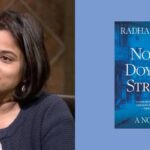How The Power of the Dog Eviscerates the Myths of the Old Western
Michelle Nijhuis on Masculinity and Queerness in the Novel and Jane Campion’s Adaptation
Though published to critical acclaim, Thomas Savage’s 1967 novel, The Power of the Dog, sold poorly and was largely forgotten until its republication in 2001, after which it began to be appreciated as a regional classic. Now, over a half-century after its debut, it may finally get the wider attention it deserves, thanks to Jane Campion’s new film adaptation, which premiered this week on Netflix and in theaters nationwide.
Traditions of disrupting Western genre conventions are almost as old as the genre itself—look no further than Oklahoma! for subversive subtext—but Savage’s novel, which takes place in 1920s Montana, eviscerates the genre more precisely, and fearlessly, than any other work I know. Phil Burbank, the novel’s dominating central character, is a wealthy ranch owner who displays all the accepted markers of Western manhood: grace in the saddle, wit in the saloon, and an apparently unlimited tolerance for pain and discomfort. Phil is also a man in terrified flight from himself, and by the time the reader meets him, he’s buried his vulnerabilities under thick strata of sweat, chaps, and cruelty.
When his brother George, with whom he co-owns the family ranch, marries a young widow named Rose, Phil feels his defenses shaken by the unwitting intruder. He begins to systematically humiliate Rose, a crafty, brutal campaign that leads to a showdown between Phil and Rose’s teenage son Peter. The joke—and the tragedy—is that the willowy, studious Peter proves to be a far more formidable antagonist than Phil himself. In The Power of the Dog, the masculinity so tirelessly defined and celebrated by the Western genre is not a cure for weakness, but a cover for it.
In The Power of the Dog, the masculinity so tirelessly defined and celebrated by the Western genre is not a cure for weakness, but a cover for it.The novel is spare, chilling, and finely crafted, and while its action feels as fated as a Greek epic, it still manages to shock. Phil is a mesmerizing villain, with a vicious charisma that disintegrates as the secret of his sexuality heaves into view. Peter—who, as the novel hints, is also gay—has none of Phil’s manipulative charm, but he has the outsider’s advantage: rejected for his effeminacy and his resolute disinterest in the cowboy code, he has little to fear from others or himself. Savage, who was married to a woman for 50 years but had a passionate, clandestine affair with the children’s book author Tomie dePaola, must have felt some sympathy with both characters.
Campion’s version foregrounds the conflict between Phil and Peter, and the contrast between their definitions of masculinity. The movie’s first lines are Peter’s, in a voiceover during the title sequence: “For what kind of man would I be if I did not help my mother? If I did not save her?” As Phil, Benedict Cumberbatch ably expresses his character’s inner agony, welling up at George’s perceived betrayal even as he plots to destroy his brother’s marriage (George and Rose are played by real-life couple Jesse Plemons and Kirsten Dunst). But while Cumberbatch is a past master at portraying toxic genius (see his Sherlock Holmes, Patrick Melrose, Dominic Cummings, and Doctor Strange, among others), he gets few chances to do so here. The audience is told Phil is smart—“Phi Beta Kappa at Yale, wasn’t it?” one ranch guest inquires—but he displays only flashes of the intelligence he wields in the book.
In Savage’s version, Phil is hazily conscious of what he’s trying to hide, to some extent fooling even himself. In the film, he keeps his late lover’s neckerchief tenderly stuffed in his pants. Self-awareness makes him a dimmer, sadder, less menacing figure, as do his almost comically telegraphed compensations: at one point in the film, Phil picks up a bulky fencepost and ostentatiously pounds it into the ground while Peter (played by Kodi Smith-McPhee) inspects a flower nearby. Though shot in New Zealand, the film communicates the grand scale and beauty of Savage’s Montana—along with the isolation that can both befriend and torment.
Indeed, the whole Western genre looks pretty queer in retrospect.When The Power of the Dog was first published, the Western genre was already past its heyday, and its popularity would soon be overwhelmed by science fiction and fantasy. Even in 1967, the novel was arguably disemboweling a dead horse. Since then, definitions of masculinity have multiplied and expanded, and queerness has become more visible, and at least somewhat more accepted, even within cowboy culture: the first gay rodeo was held less than a decade after the novel appeared and is now a beloved regional institution. Indeed, the whole Western genre looks pretty queer in retrospect. “Now even the most classic Western seems more international, sexually ambiguous, and stylized than it once may have appeared,” observes historian Josh Garrett-Davis in his book What Is a Western?
Still, the cultural grip of the genre’s masculine ideal hasn’t loosened much. Since 1967, two US presidents have self-consciously styled themselves as cowboys, with foreign policies to match. Most science fiction classics are Westerns transferred to other galaxies, with homophobia, sexism, and colonialism intact. And the internet has, of course, created a new frontier for cowboy culture, another place where disaffected young men can shout down those they view as threats to their rigidly conceived identities.
I saw The Power of the Dog in Portland, Oregon, at the Hollywood Theater, which opened its doors in 1926, just a year after the central events in the novel. Less than two blocks from the theater is the Hollywood Transit Center, where in 2017 two teenage girls, both of whom are Black and one of whom was wearing a headscarf, were accosted on the light-rail train by a man yelling anti-Muslim slurs. When three male passengers intervened to protect the girls, the assailant attacked them with a knife, killing two and grievously wounding the third. For months afterward, the transit center doubled as a shrine, decorated with flowers and chalked with expressions of grief and outrage.
Meanwhile, the right-wing extremists with whom the perpetrator associated continue to preach hate and violence, encouraging their faithful to lash out rather than find the courage to look within. The sun may have set on the Western genre, but we still need reminding that those with the biggest hats have the fewest cattle.




















